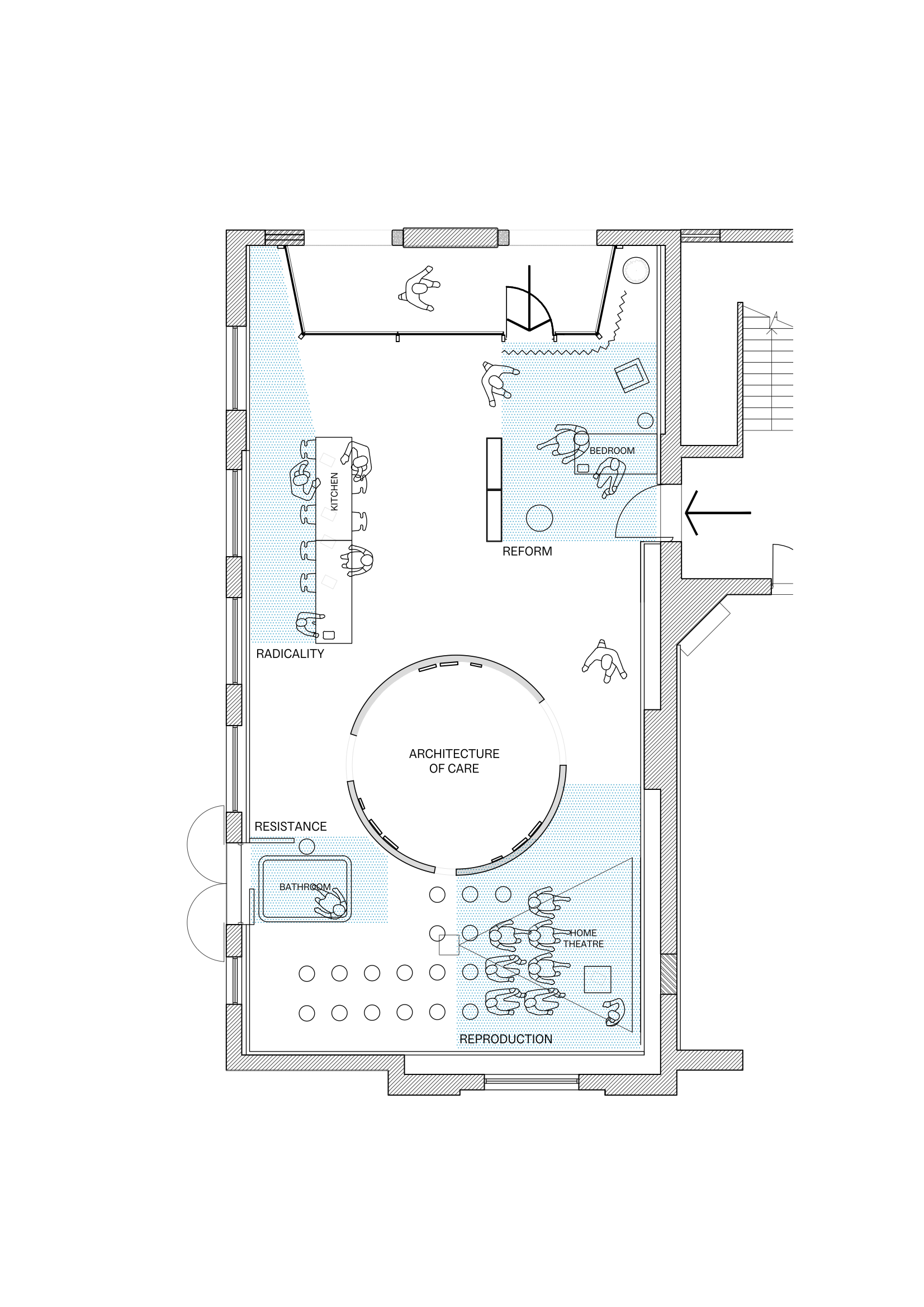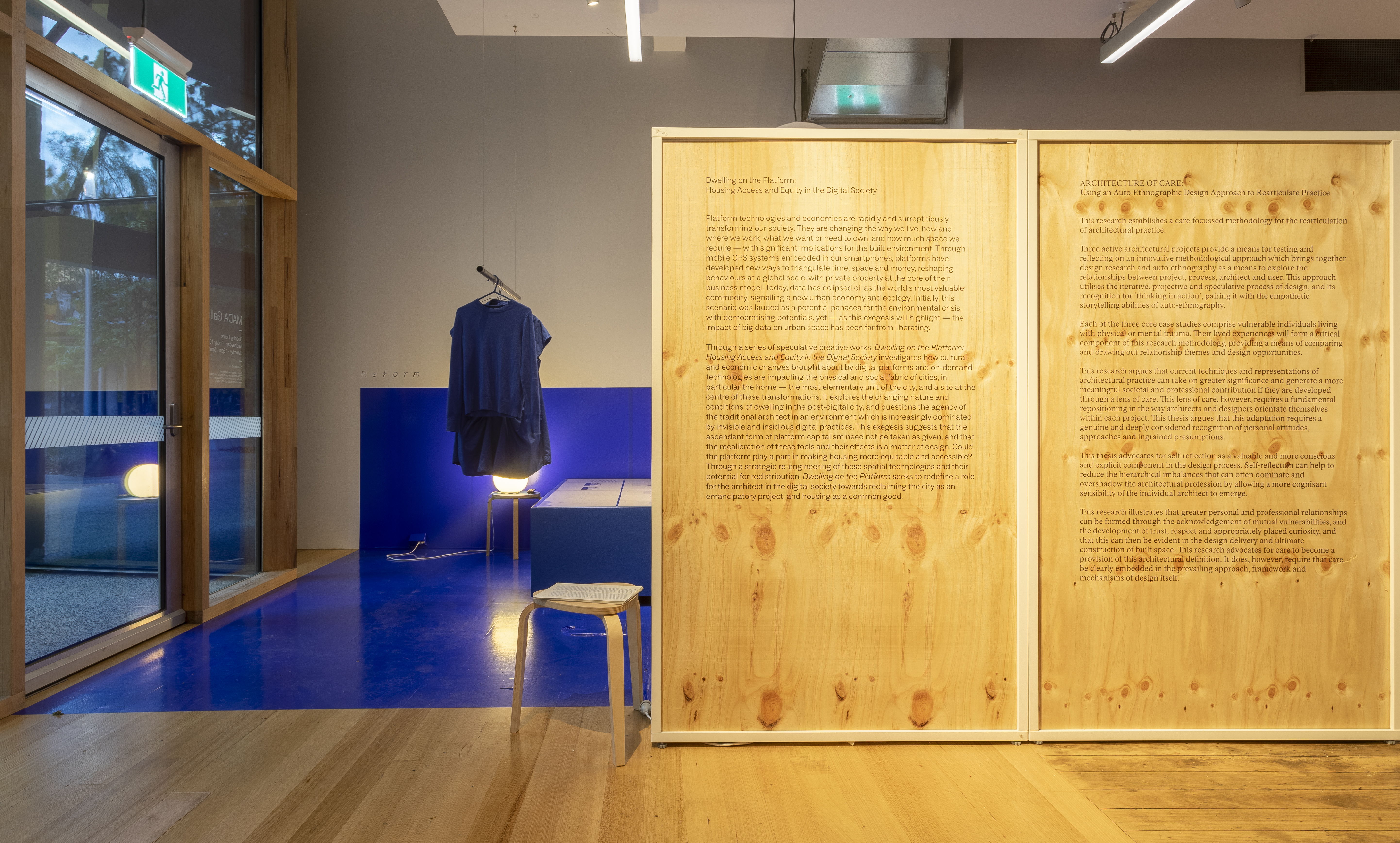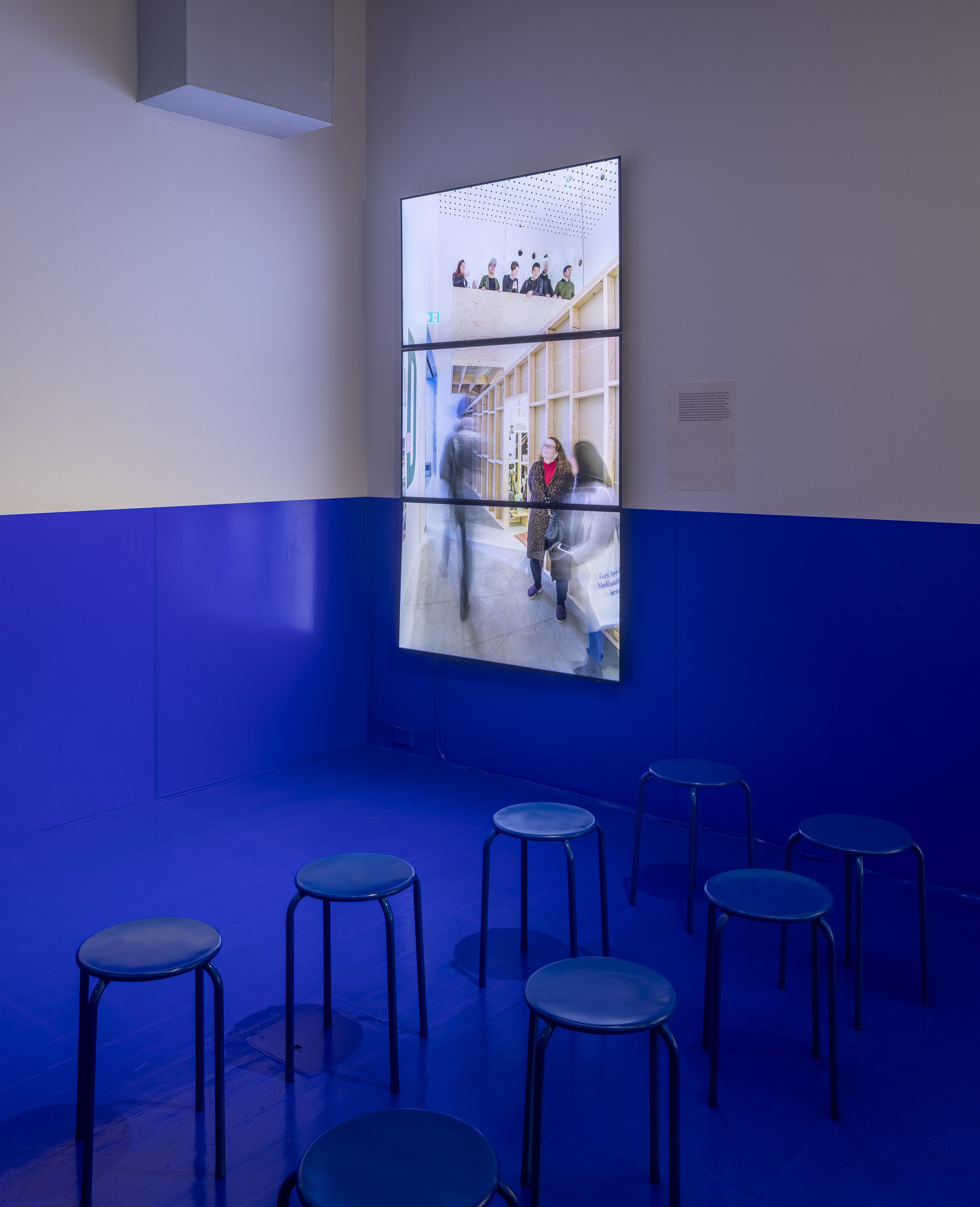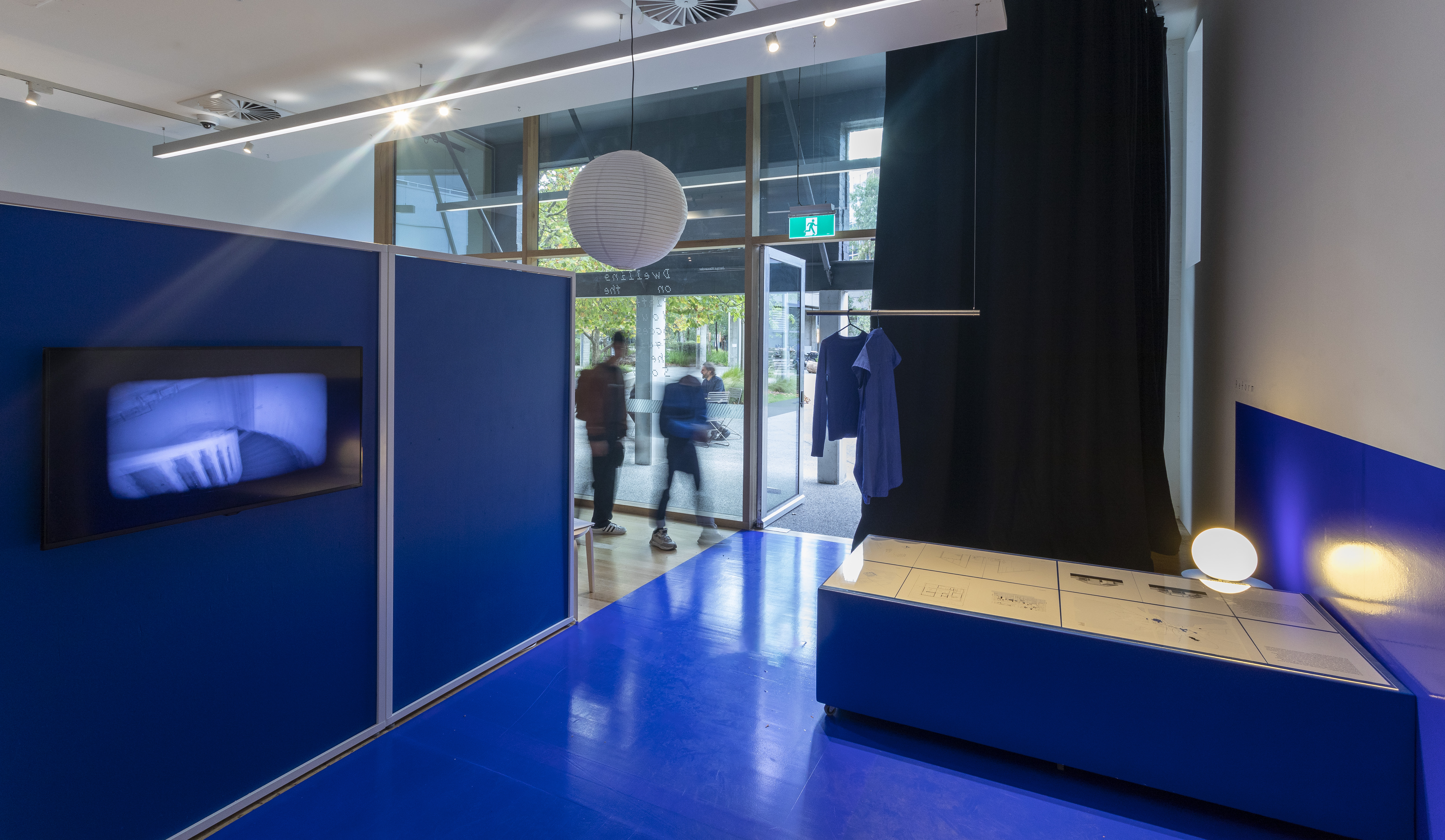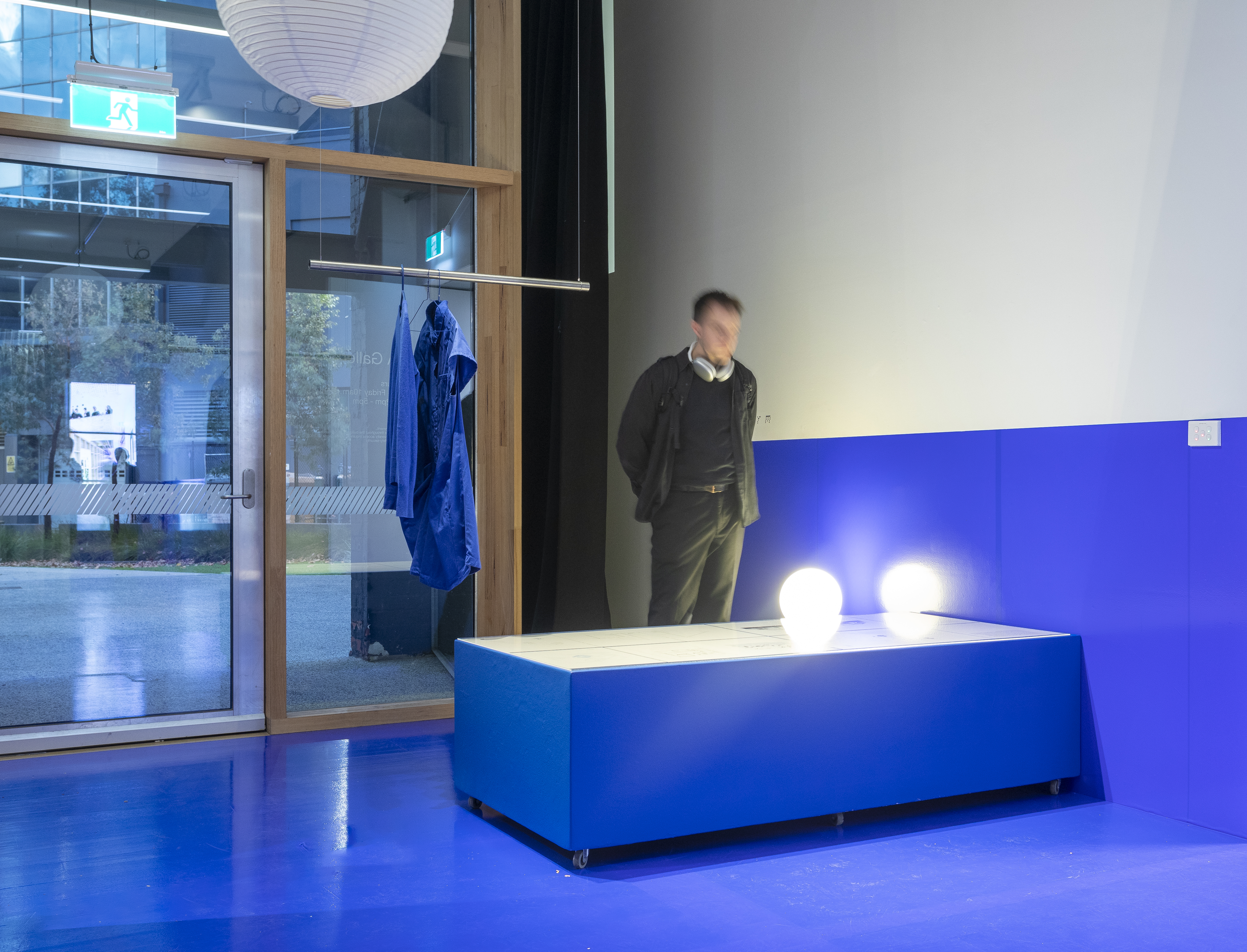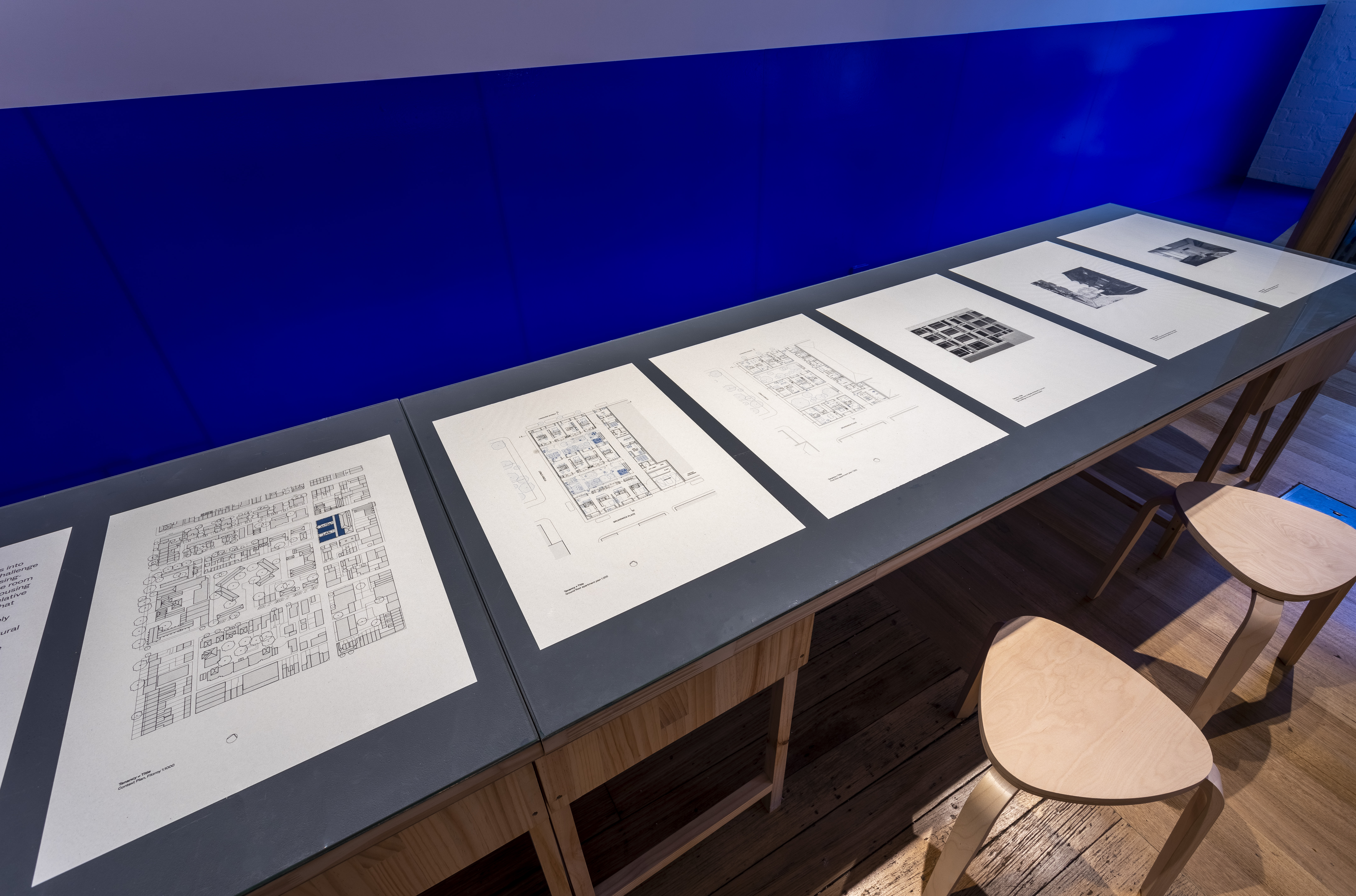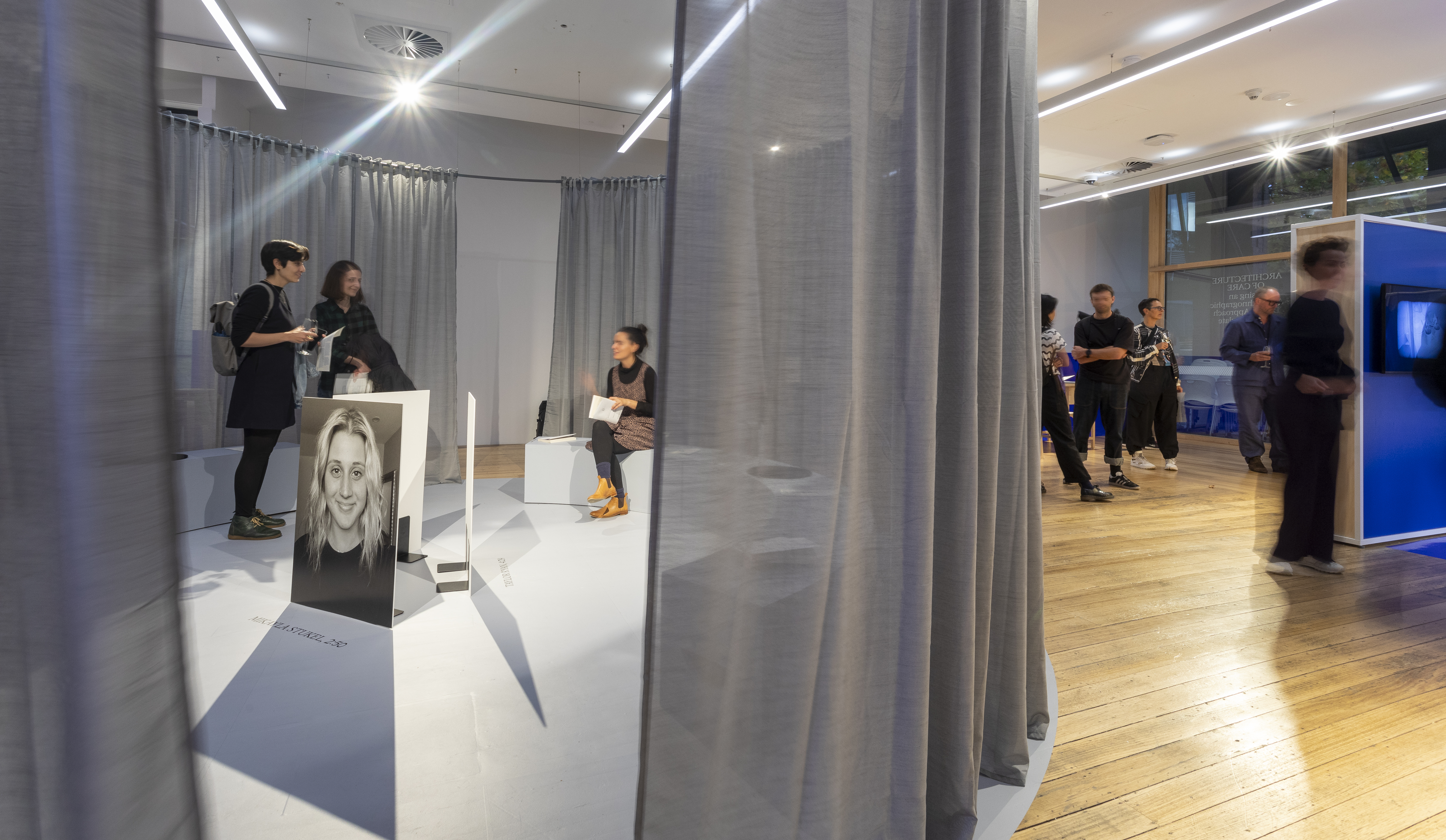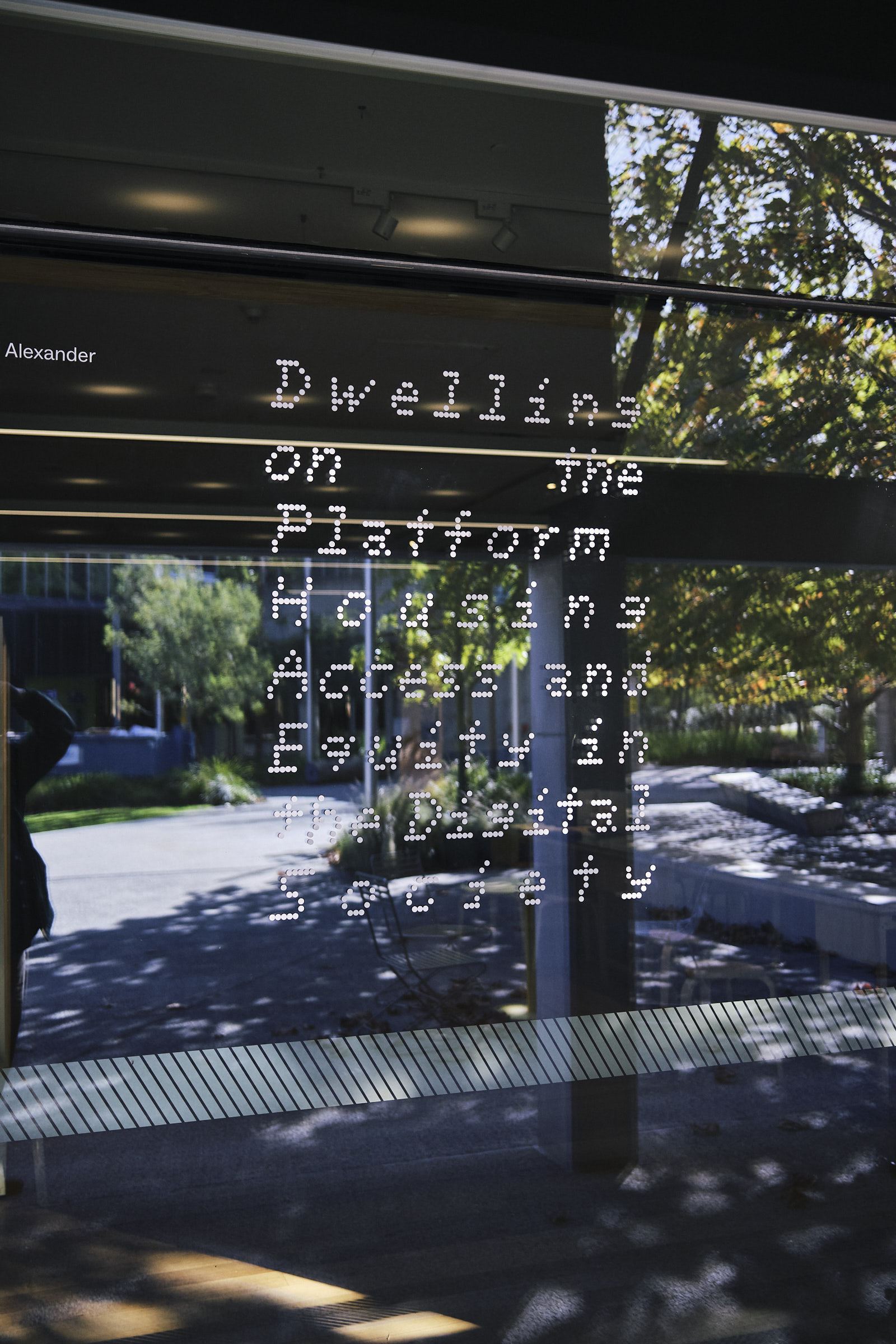Alexander & Sheridan Architecture Dwelling on the Platform: Housing Access and Equity in the Digital Society was an exhibition at the MADA Gallery in Melbourne, Australia showcasing a series of creative works that explore the conditions, opportunities, and contingencies of architecture in the era of the platform.
Dwelling on the Platform was designed in collaboration with Anthony Clarke of BLOXAS whose exhibition Architecture of Care: Using an Auto - Ethnographic Design Approach to Rearticulate Practice shared the space.
Platform technologies and economies are rapidly and surreptitiously transforming our society. They are changing the way we live, how and where we work, what we want or need to own, and how much space we require — with significant implications for the built environment. Through mobile GPS systems embedded in our smartphones, platforms have developed new ways to triangulate time, space and money, reshaping behaviours at a global scale, with private property at the core of their business model. Today, data has eclipsed oil as the world’s most valuable commodity, signalling a new urban economy and ecology. Initially, this scenario was lauded as a potential panacea for the environmental crisis, with democratising potentials, yet — as this exegesis will highlight — the impact of big data on urban space has been far from liberating.
Through a series of speculative creative works, Dwelling on the Platform: Housing Access and Equity in the Digital Society investigates how cultural and economic changes brought about by digital platforms and on-demand technologies are impacting the physical and social fabric of cities, in particular the home — the most elementary unit of the city, and a site at the centre of these transformations. It explores the changing nature and conditions of dwelling stemming from these new modalities of rent and questions the agency of the traditional architect in an environment which is increasingly dominated by invisible and insidious digital practices. This body of work suggests that the ascendent form of platform capitalism need not be taken as given, and that the recalibration of these tools and their effects is a matter of design. Could the platform play a part in making housing more equitable and accessible? Through a strategic re-engineering of these spatial technologies and their potential for redistribution, Dwelling on the Platform seeks to redefine a role for the architect in the post-digital city towards reclaiming the city as an emancipatory project, and housing as a common good.
